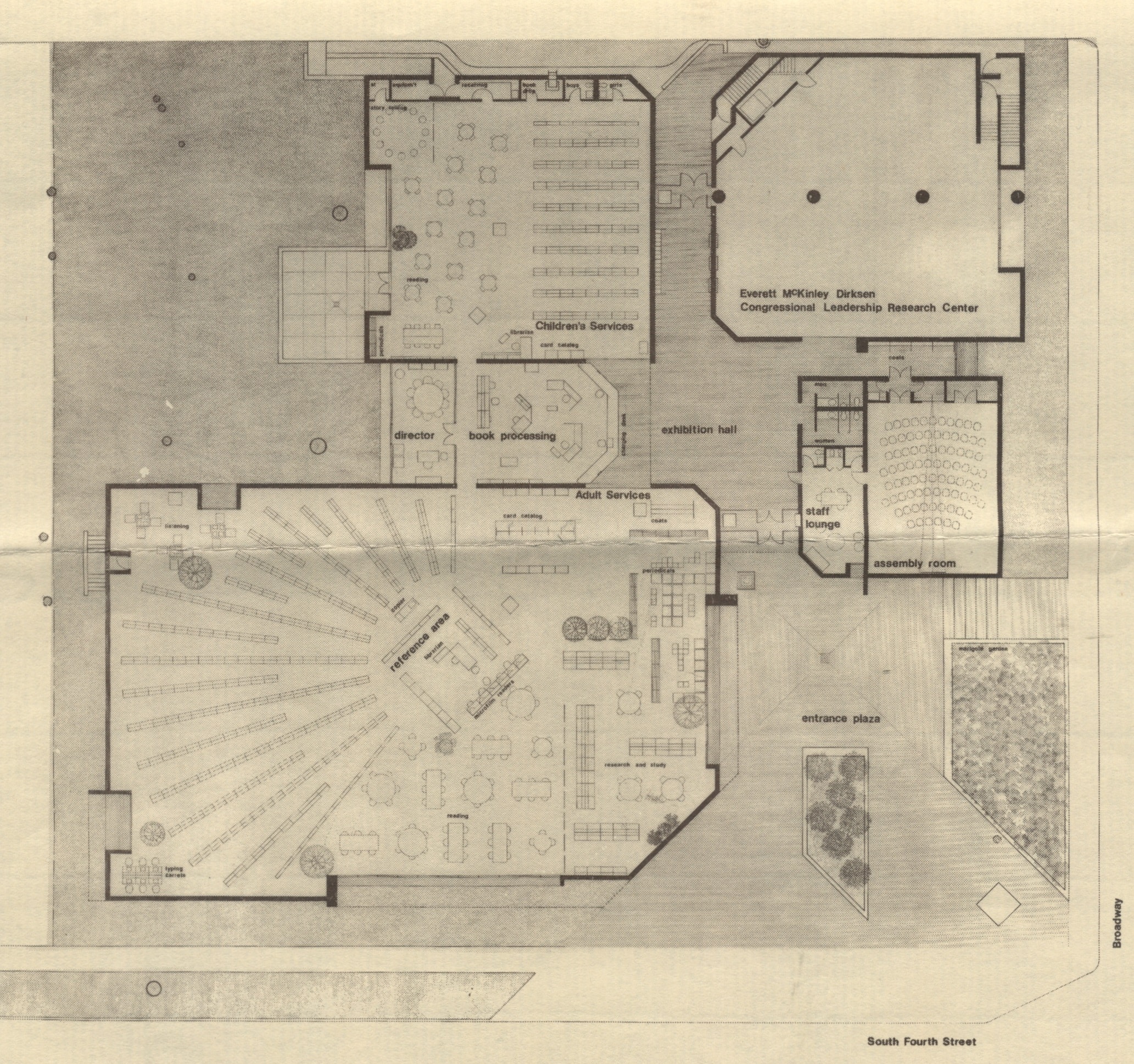In the previous installment of our ongoing series on the history of the Pekin Public Library, we recalled how Pekin’s “Baby Boom” population increase and the steady growth of the library’s collection led to the decision in the late 1950s to begin planning on a new, larger library building.
It was the dream of Pekin Mayor J. Norman Shade that the new building would house both the Pekin Public Library and a Dirksen Congressional Center that would serve as an archive for the papers of U.S. Sen. Everett M. Dirksen of Pekin and a research center for students of the history and workings of the U.S. Congress.
In January of 1964, incorporation papers for the Dirksen Center were filed with the Illinois Secretary of State by Mayor J. Norman Shade, Walter V. McAdoo, and Harold E. Rainville. From that point, preparations for a new library really began to ramp up. The next visible development in that planning process came in December of 1965, when the Pekin library board acquired two more residential properties behind the library.
Around that same period of time, there came another development that was very important to the Pekin Public Library and many other Central Illinois libraries. On Jan. 7, 1966, Pekin Library Board Chairman John E. Velde Jr. was elected first president of the new Illinois Valley Library System, which then included 17 public libraries in Tazewell, Peoria, and Woodford counties.
It was in Dec. 1965 that the Pekin Public Library joined the Illinois Valley Library System, which was a predecessor of the present Alliance Library System to which Pekin’s library now belongs. Somewhat later than his election as IVLS president, Velde would be named to President Richard Nixon’s new National Commission on Libraries and Information Sciences.
The next major landmark in Pekin Public Library history occurred about a year later. On Dec. 31, 1966, it was announced that Pekin’s Carnegie library would be razed and replaced by a larger, modern structure. Charles M. Mohrhardt and Ralph A. Ulveling, head of the Detroit, Mich., library system, were invited by the library board to share their insight and expertise in helping to plan the new structure.
After about two years of the library board’s planning work, on Nov. 1, 1968, Pekin Public Library director John Wicks announced that the architectural firm of John B. Hackler and Co. of Peoria was awarded the contract to design for the new library and Dirksen Congressional Center, projected to cost $750,000.
In the midst of the preparations for a new library, in February of 1971 the library board appointed Mrs. Paula Weiss of Columbia, Mo., as head of Pekin Public Library’s Children’s Department and Cataloging Department. Weiss would eventually become the Pekin library director.
Nearly six years after the announcement that the Pekin Carnegie library would be replaced by a new and larger structure, the design concept of John B. Hackler and Co. was unveiled. On Oct. 15, 1971, Pekin Public Library director Richard N. Peck revealed the plans for the new library and Dirksen Center, a 37,000-square-foot facility (of which 15,500 square feet would be occupied by the Dirksen Center) to be built at a projected cost of $1,450,000. The facility would be a two-storey structure and would include a hall for public assemblies and events as well as an exhibition hall.

The structure’s planned dimensions would later be trimmed to 32,500 square feet, of which 11,000 square feet would belong to the Dirksen Center and 19,000 square feet would house the Pekin Public Library facilities.
The next stage of the planning process arrived on June 20, 1972, when the Pekin library board accepted the low bid of Del Construction Co. of Washington, Ill., to build the new library and Dirksen Center for $1,111,780. That cost later was adjusted in Jan. 1973 with the addition of $51,842 in needed sewer system, pumping, and sidewalk work, because the Hackler design called for a sunken structure.
And with that, construction of the new library and Dirksen Center got under way.
But that is a story we will tell next week.









